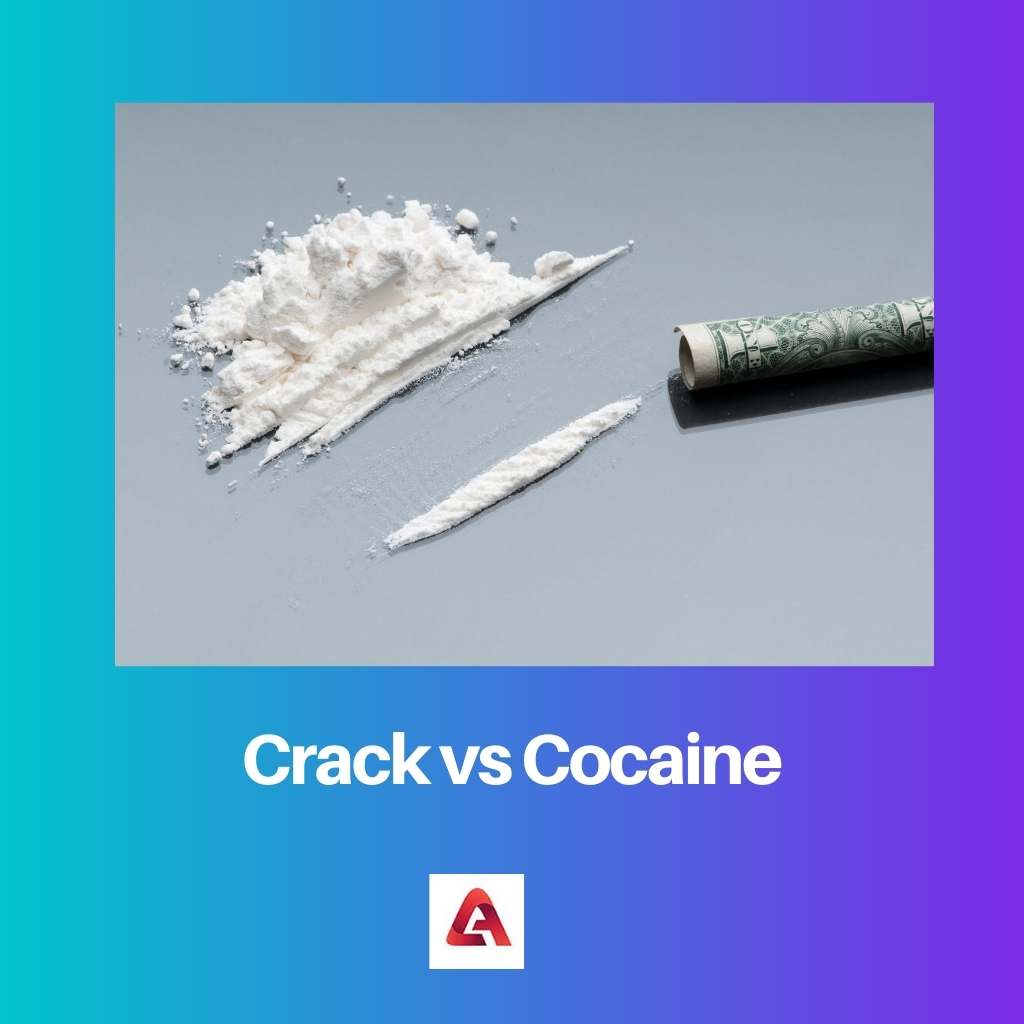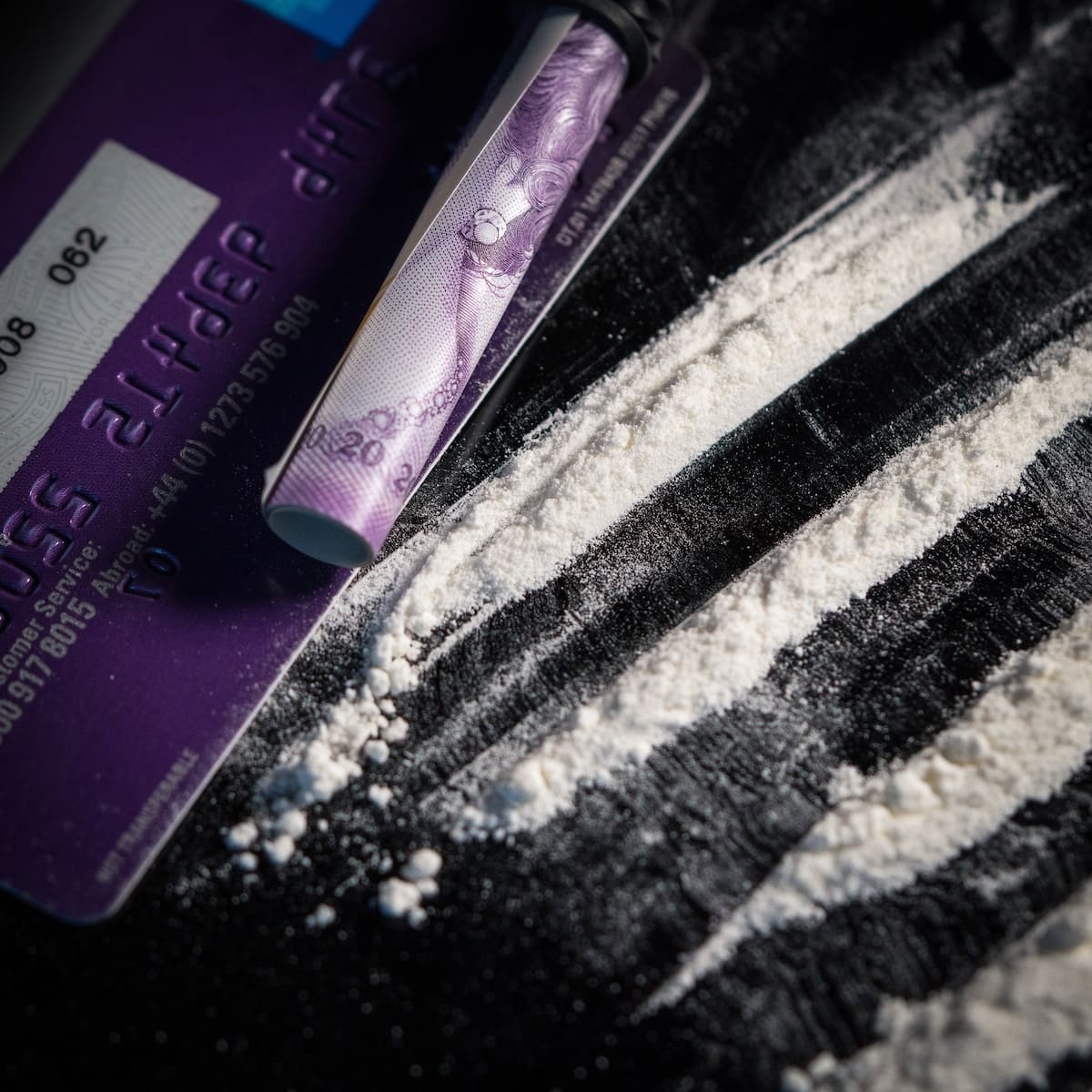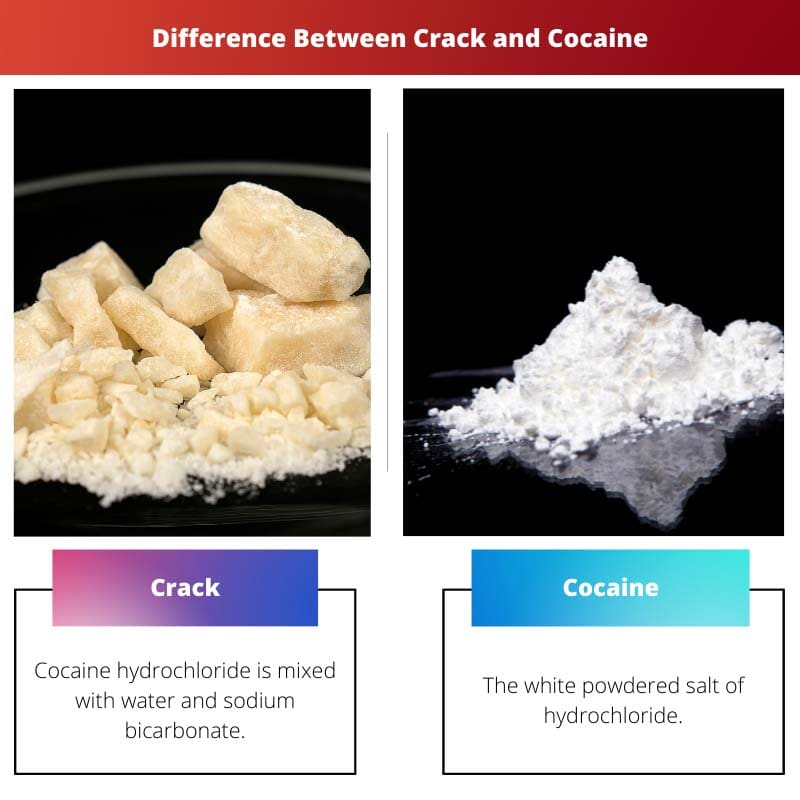Drugs are a vast topic that is both interesting and intriguing, and once you learn about how they are made, you will enjoy them. The order in which they are classified is determined by their structure, reactivity, and physical and chemical properties. In the case of drugs, two drugs can be identical or dissimilar based on their uses, dosages, concentrations, forms, and physiological effects. We’ll try to figure out how to tell the difference between crack and cocaine. Cocaine is a stimulant; we’ll review it in depth later.
Key Takeaways
- Crack is a form of cocaine produced by dissolving powdered cocaine in water and baking soda, then heating and solidifying it into rocks.
- Cocaine is more expensive than crack and is snorted or injected, while crack is smoked.
- Crack has a shorter, more intense high than cocaine, leading to a higher risk of addiction.
Crack vs Cocaine
The difference between crack and cocaine is that crack is a harder, solid substance, whereas cocaine is a powdered white substance. Crack is obtained by mixing other chemicals with cocaine, whereas cocaine is the more natural form. Furthermore, crack is smoked, whereas cocaine can be consumed in a variety of ways, including injection, snorting, and so on.

Crack is a form of cocaine that has been altered. It is made rock hard by combining water with sodium bicarbonate (also known as baking soda) or ammonia. The substances are mixed with cocaine and then evaporated until only a rock-hard crumbly textured substance remains. It’s also been prepared so that it can be smoked.
Cocaine, on the other hand, comes in the form of a white powder. It comes from the coca plant, which contains cocaine as an alkaloid. Cocaine’s texture is never damp but rather light. It can also take the form of an off-white crystalline crystal. Cocaine is snorted or injected. There are a variety of other ways to consume cocaine.
Comparison Table
| Parameters of comparison | Crack | Cocaine |
|---|---|---|
| Texture | Solid lump | Powdered |
| Substance | Cocaine hydrochloride is mixed with water and sodium bicarbonate. | The white powdered salt of hydrochloride |
| Method of taking | Smoking | Snorting, injecting, etc |
| How long does the effect last? | 5 to 10 mins (smoking) | 15 to 20 mins (snorting) |
| How expensive are they? | Less expensive | More expensive |
What is Crack?
When discussing crack, it’s important to note that the differences between crack and cocaine can be seen with a visual inspection. However, there isn’t much of a difference in their pharmacology. We can tell the difference between crack and cocaine by the texture and method of extraction. Crack is a rock-hard solid made by combining water and sodium bicarbonate with cocaine’s hydrochloride salt version. Another important distinction to note is that crack is insoluble in water base form of cocaine.
The name crack refers to the cracking sound that the mixture makes as it heats up. It’s more like the free base of a more natural cocaine variant. Crack is inhaled through smoking and thus quickly reaches the brain, where it has a 5- to 10-minute effect. Smoking crack is also more offensive when we consider the socioeconomic impact. The drug policy alliance has shown that black people are more likely to be convicted of crack offences. As previously stated, the effects of crack are processed more quickly because it is consumed through smoking. It makes you feel euphoric right away. Crack became popular in the 1980s and is considered a new invention. Crack is less expensive than cocaine. Because crack has a higher concentration than cocaine, it has a more negative effect.
What is Cocaine?
Cocaine is a white powdery textured substance with very small particles. It can be found in the alkaloid form of coca leaves in nature. Cocaine has medical applications as well. Initially, the coca leaf was used as a tea, and filtered cocaine was used as a tonic to treat various illnesses in the early 1900s. Cocaine is a salt of hydrochloride that is soluble in water. Cocaine has several negative health effects when used for an extended period, including hallucinations, malnutrition, and paranoid psychosis.
Cocaine’s molecular weight is 339.8, and its chemical formula is C17H21NO4. Cocaine is water-soluble, unlike crack, which is only slightly soluble or insoluble. Crack and cocaine are both soluble in ethanol or alcohol medium. Crack is soluble in ether medium, but cocaine is found to be insoluble in experiments. Last but not least, crack and cocaine are both soluble in chloroform medium. These are chemical analyses of both types of medications. Cocaine is classified as a stimulant, also known as an upper, because of its energy-boosting properties. It also gives you a sudden rush. In addition to being high, it boosts your productivity.
When snorted, cocaine has a duration of 15 to 20 minutes, whereas when injected, it can last up to 60 minutes. If used as an addiction, it has serious side effects.

Main Differences Between Crack and Cocaine
- The difference between crack and cocaine is that crack is a solid lump with sharp edges, whereas cocaine is a powdered substance.
- Crack is made by combining water and baking soda with the hydrochloride salt of cocaine, whereas cocaine is found in coca leaves as an alkaloid.
- Crack is insoluble in water, whereas cocaine is soluble in water.
- The effects of crack last about 5 to 10 minutes, while the effects of cocaine snorted last about 15 to 20 minutes.
- Crack can only be consumed by smoking, whereas cocaine can be consumed by snorting, injecting, and other methods.





